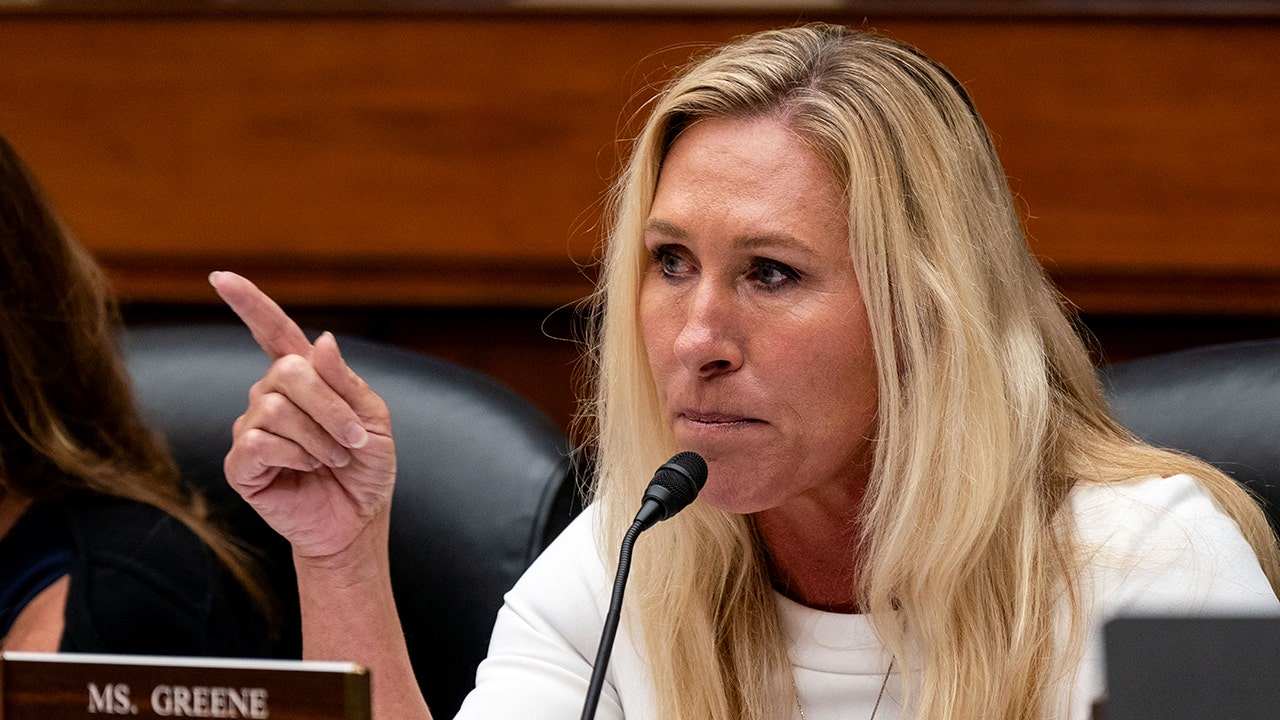North Dakota
North Dakota wrote exception into state law for binary trigger used by Fargo shooter

FARGO — North Dakota lawmakers made sure
binary triggers
were legal in the state four years before a gunman who likely planned a mass shooting in Fargo used the device to kill a police officer.
The state Legislature codified the binary trigger into Century Code with overwhelming support in 2019.
House Bill 1308
added language into law that stated a “machine gun, submachine gun or fully automatic rifle,” which is banned under North Dakota law, “does not include a binary trigger that fires one round upon the pull of the trigger and one round upon release of the trigger.”
The bill was proposed because some companies wanting to sell the trigger in North Dakota worried state law at the time banned the triggers, Rep. Mike Lefor, R-Dickinson, said Feb. 18, 2019, as he carried the bill to the House floor.
“There is one company that refuses to sell them to North Dakota because they think somebody might get good enough at pulling and releasing the binary trigger, causing it to fire five times in a second,” then-Sen. Dwight Cook, R-Mandan, said March 29, 2019, as he carried the bill to the Senate.
Cook’s 2019 words are similar to those spoken by North Dakota Attorney General Drew Wrigley when he announced Friday, July 21, that 37-year-old Mohamad Barakat, of Fargo, retrofitted a long rifle with a binary trigger before opening fire on police on July 14. Officers were responding to a routine crash at 25th Street and Ninth Avenue South in Fargo when Barakat fatally shot Officer Jake Wallin.
A binary trigger allowed Barakat to rapidly shoot at law enforcement, Wrigley said during the Friday news conference. He called the trigger “purposeless.”
“Some of my agents were commenting to me that if you get pretty good at that, and you get the rhythm of that, you’ve made your weapon into a fully operable machine gun,” Wrigley said as he described using the trigger.
The attorney general declined to comment Monday when asked if he would seek legislation to ban the trigger. He said Friday that banning the trigger is a “broader discussion down the road.”
The North Dakota House passed House Bill 1308 in an 80-12 vote, while the state Senate approved it 42-3. No one spoke against the bill on the House and Senate floors.
Lefor and Cook both voted yes.
North Dakota Gov. Doug Burgum signed the bill into law. His spokesman, Mike Nowatzki, noted the bill received bipartisan support.
“While the governor isn’t going to speculate on potential future legislation, he would, as always, seriously consider any recommendations from the law enforcement community,” Nowatzki said in an email to The Forum.
The Legislature passed the law to clarify that binary triggers were legal in North Dakota, Lefor said Monday in an interview with The Forum. The current House majority leader said it would be difficult to make North Dakota “an island” that bans the binary trigger when federal law allows it through the Second Amendment.
“This is something that has to be resolved on the federal level because it is legal federally,” Lefor said.
Sen. Merrill Piepkorn, D-Fargo, who voted against House Bill 1308, told The Forum he didn’t understand why legislators had to insert the language into law. He said he would be in favor of either rewriting the law to remove the term binary triggers or banning the device, though he would speak with concerned citizens and law enforcement to get a sense of what would be the best way to approach revising Century Code.
“I would take a look at it,” he said. “I think the public has a deeper understanding about the effect of this type of weapon.”
David Samson / The Forum
‘Trick shooting or target shooting’
Rep. Matthew Ruby, R-Minot, introduced House Bill 1308 because a constituent requested it, according to testimony he gave to the Senate Energy and Natural Resources Committee.
“The main issue is that certain manufacturers are worried the language may ban these triggers, while others are perfectly fine sending orders here,” he said in a letter to the committee.
When asked what the biggest market for the trigger was, Ruby said, “Mainly trick shooting or target shooting,” according to testimony records. He also said he had one.
“The other reason is you can hit some pretty good fire rates by training,” Ruby told the Senate committee. “The fastest revolver, with no attachments, is 8 rounds per second. You can get really fast if you train. That is usually your target shooters and competition shooters.”
He did not return a message left by The Forum.
Barakat, who also injured two officers and a bystander in the shooting, practiced at a West Fargo gun range. He was
“practicing his shooting skills”
in the hours before the ambush, Wrigley said Friday.
The shooter also researched “mass casualty events” online, Wrigley said. The last website on Barakat’s search history was a story about thousands attending the Downtown Fargo Street Fair, leading authorities to believe he planned to shoot attendees.
North Dakota Century Code defines a machine gun as being able to fire five or more rounds in a second with one trigger pull, Lefor said on the House floor.
“For a binary trigger to fire five rounds per second, it would require three trigger pulls,” he said, adding it only meets one of the two criteria for the definition of a machine gun.
Wrigley on Friday disputed claims that the binary trigger didn’t turn guns into a fully automatic weapon.
“It’s the functional equivalent of it, and we’ve outlawed that for decades,” he said.
Binary triggers are legal in most states, though at least 10 states have banned the device.
Addressing the issue is a challenge, Lefor told The Forum. He said his “heart absolutely breaks” for Wallin, the officer’s family and the Fargo community. He said he believes the change on binary triggers has to come from the federal level.
“At the end of the day, you can’t have a hodgepodge of state laws across the country,” Lefor said.
Piepkorn said during a Senate committee hearing that the bill was introduced for one person. He was the only committee member of six on the Senate side to vote against a “do pass” recommendation.
“I don’t think it warrants a place in our Century Code,” Piepkorn said, according to hearing minutes.
Lawmakers can take steps to prevent a mass shooting, or at least lessen the threat, without infringing upon people’s right to bear arms, Piepkorn told The Forum.
“It’s certainly not a hunter’s issue. It’s something else,” he said. “I think that there’s broad public support for us … taking a look at the law and seeing what we can do to lessen threats like this.”
HOUSE: 80-12
YEAS: Bert Anderson, R-Crosby; Dick Anderson, R-Willow City; Thomas Beadle, R-Fargo; Rick Becker, R-Bismarck; Larry Bellew, R-Minot; Jake Blum, R-Grand Forks; Glenn Bosch, R-Bismarck; Mike Brandenburg, R-Edgeley; Chuck Damschen, R-Hampden; Jeff Delzer, R-Underwood; Bill Devlin, R-Finley; Jason Dockter, R-Bismarck; Sebastian Ertelt, R-Gwinner; Clayton Fegley, R-Berthold; Jay Fisher, R-Minot; Jim Grueneich, R-Ellendale; LaurieBeth Hager, D-Fargo; Patrick Hatlestad, R-Williston; Craig Headland, R-Montpelier; Pat Heinert, R-Bismarck; Jeff Hoverson, R-Minot; Michael Howe, R-West Fargo; Craig Johnson, R-Maxbass; Dennis Johnson, R-Devils Lake; Mary Johnson, R-Fargo; Daniel Johnston, R- Kathryn; Terry Jones, R-New Town; Tom Kading, R-Fargo; Karen Karls, R-Bismarck; Jim Kasper, R-Fargo; George Keiser, R-Bismarck; Keith Kempenich, R-Bowman; Lawrence Klemin, R-Bismarck, Ben Koppelman, R-West Fargo; Kim Koppelman, R-West Fargo; Gary Kreidt, R-New Salem; Vernon Laning, R-Bismarck; Mike Lefor, R-Dickinson; Donald Longmuir, R-Stanley; Scott Louser, R-Minot; Jeffery Magrum, R-Hazelton; Andrew Marschall, R-West Fargo; Bob Martinson, R-Bismarck; Aaron McWilliams, R-Hillsboro; Lisa Meier, R-Bismarck; Corey Mock, D-Grand Forks; David Monson, R-Osnabrock; Mike Nathe, R-Bismarck; Jon Nelson, R-Rugby; Emily O’Brien, R-Grand Forks; Mark Owens, R-Grand Forks; Bob Paulson, R-Minot; Gary Paur, R-Gilby; Chet Pollert, R-Carrington; Todd Porter, R-Mandan; Brandy Pyle, R-Casselton; David Richter, R-Williston; Shannon Roers Jones, R-Fargo; Karen Rohr, R-Mandan; Dan Ruby, R-Minot; Matthew Ruby, R-Minot; Bernie Satrom, R-Jamestown; Mike Schatz, R-New England; Austen Schauer, R-West Fargo; Jim Schmidt, R-Huff; Mary Schneider, D-Fargo; Randy Schobinger, R-Minot; Cynthia Schreiber-Beck, R-Wahpeton; Luke Simons, R-Dickinson; Kathy Skroch, R-Lidgerwood; Vicky Steiner, R-Dickinson; Michelle Strinden, R-Fargo; Nathan Toman, R-Mandan; Wayne Trottier, R-Bismarck; Bill Tveit, R-Hazen; Steve Vetter, R-Grand Forks; Don Vigesaa, R-Cooperstown; Robin Weisz, R-Hurdsfield; Greg Westlind, R-Cando; Denton Zubke, R-Watford City.
NAYS: Mary Adams, D-Grand Forks; Pamela Anderson, D-Fargo; Tracy Boe, D-Mylo; Josh Boschee, D-Fargo; Ruth Buffalo, D-Fargo; Gretchen Dobervich, D-Fargo; Matt Eidson, D-Grand Forks; Ron Guggisberg, D-Fargo; Karla Rose Hanson, D-Fargo; Richard Holman, D-Mayville; Alisa Mitskog, D-Wahpeton; Marvin Nelson, D-Rolla.
ABSENT AND NOT VOTING: Dwight Kiefert, R-Valley City; Mark Sanford, R-Grand Forks.
SENATE: 42-3
YEAS: Howard Anderson Jr., R-Turtle Lake; JoNell Bakke, D-Grand Forks; Brad Bekkedahl, R-Williston; Randy Burckhard, R-Minot; David Clemens, R-West Fargo; Dwight Cook, R-Mandan; Kyle Davison, R-Fargo; Dick Dever, R-Bismarck; Jim Dotzenrod, D-Wyndmere; Jay Elkin, R-Taylor; Richard Erbele, R-Lehr; Robert Fors, R-Larimore; John Grabinger, D-Jamestown; Joan Heckaman, D-New Rockford; Kathy Hogan, D-Jamestown; David Hogue, R-Minot; Ray Holmberg, R-Grand Forks; Jordan Kannianen, R-Stanley; Jerry Klein, R-Fessenden; Karen Krebsbach, R-Minot; Curt Kreun, R-Grand Forks; Oley Larsen, R-Minot; Diane Larson, R-Bismarck; Gary Lee, R-Casselton; Randy Lemm, R-Hillsboro; Larry Luick, R-Fairmount; Scott Meyer, R-Grand Forks; Janne Myrdal, R-Edinburg; Erin Oban, D-Bismarck; Dave Oehlke, R-Devils Lake; Dale Patten, R-Watford City; Nicole Poolman, R-Bismarck; Larry Robinson, R-Valley City; Jim Roers, R-Fargo; Kristin Roers, R-Fargo; David Rust, R-Tioga; Donald Schaible, R-Mott; Ronald Sorvaag, R-Fargo; Jessica Unruh, R-Beulah; Shawn Vedaa, R-Velva; Terry Wanzek, R-Jamestown; Rich Wardner, R-Dickinson.
NAYS: Richard Marcellais, D-Belcourt; Tim Mathern, D-Fargo; Merrill Piepkorn, D-Fargo.
ABSENT AND NOT VOTING: Michael Dwyer, R-Bismarck; Judy Lee, R-West Fargo.

North Dakota
My Heartfelt Christmas Wish To You North Dakota

My Heartfelt Christmas Wish To You North Dakota.
Not a “catchy-clicky” title and I doubt many of my listeners or readers will probably even read this article.
However, I wanted to share something with you that is on my heart. This is so not me, as I’m more the guy who writes about “North Dakota’s 10 most quirky this and that”.
It’s not that I’m not a sensitive guy, because when I was growing up, I was probably too sensitive. I would avoid sad movies, songs, or anything that would spark too much of an emotion.
Yes, you could say my heart has become a bit jaded and cold over the years. It’s not something I’m proud of but more of a defense mechanism.
2024 has probably been one of the most challenging years for my family.
From losing loved ones to family issues to health issues to very challenging financial times, it’s been one of those years where you just can’t catch a break. I’m sure many of you can relate.
As we were attending a Christmas Eve candlelight service last night a young child caught my eye.
She was a cute little toddler who was starting to act up. Something I remember oh so well at church with my little now 20-year-old son.
As her father took her outside the sanctuary to attend to her, I couldn’t help but notice this child’s extremely unfair situation. She had a disability at a year or so old, that none of us could ever imagine. It broke my heart.
This poor child and her family no doubt have a long road ahead of them. As we lit our candles later in the service, I caught the wonder in her eyes, and it couldn’t help but melt my cold heart at the time.
She was perfect and I found myself saying a prayer for this little blonde girl with curly locks and her family.
Her situation also reminded me that I should be thankful for what I have and not what I don’t this Christmas. This is my Christmas wish for you North Dakota, that you will realize the same thing.
Be thankful for who you have around the tree today, not what’s under it.
Merry Christmas to all my listeners and readers. I hope at least a few of you get to read this and it will touch you the same way this little girl touched me on Christmas Eve.
LOOK: Popular Dinners Americans Don’t Make as Often Anymore
From classic casseroles to heaping helpings of beige-on-beige, these beloved American dinner dishes have fallen out of the mealtime rotation.
Gallery Credit: Stephen Lenz
The 11 Best Gooey Caramel Rolls You Will Find In North Dakota
North Dakota
Could a Bismarck woman become North Dakota's 1st saint?

BISMARCK — Christmas Day marks the ninth anniversary of 31-year-old Michelle Duppong’s death. While her family and friends will feel her absence on this day, they also feel the love, kindness and faith she demonstrated during her short life, along with abundant hope that she not only shared while alive but continues to share in death, which is one of the reasons she is slated to become the first person from North Dakota to become a Catholic saint.
Contributed
In June 2022, Bismarck Bishop David D. Kagan announced the opening of a diocesan investigation into Duppong’s “holiness of life and love for God,” officially starting the long and arduous process of canonization to a saint. On Nov. 1, 2022, Kagan deemed Duppong a servant of god.
Duppong is on track to be the first North Dakotan and one of few around the world to be canonized, said Father Tom Grafsgaard, of Hazen, North Dakota. According to Catholic publications, only 11 people from the U.S. have become canonized saints.
“It’s never happened in the history of North Dakota in either (the Bismarck or Fargo) Diocese,” Grafsgaard said. “It’s quite exceedingly rare for this to be happening.”
In the process of canonization, the Catholic Church declares people “saints.” There are three paths to sainthood: to have died as a martyr for Catholicism; if one lived an expression of love and died a rather quick and unexpected death; or if they gave a heroic example of living all the Christian virtues.
The process of canonization is governed by a strict canonical or juridical procedure established by St. John Paul II in 1983.
After Kagan began the process, Duppong’s cause entered the diocesan phase of investigation into her life. The Michelle Duppong Guild was created — a group tasked with promoting an awareness of her life. Officials are poring over Duppong’s writings, work, demonstrations of faith and the great number of lives she touched while alive, which are illustrated through interviews with those who knew her, Grafsgaard said.
Her case will be built up and eventually sent to the Dicastery for the Causes of the Saints in Rome for the Roman Phase of canonization. A Vatican panel will also investigate and determine if Duppong lived a heroically virtuous life. The Dicastery can then issue a “decree of heroic virtue” in which Duppong would be given the new title of “Venerable Servant of God.”
The third step, beatification, then begins. During this phase, it must be proven that one miracle has been granted by God through Duppong’s intercession. If the Pope declares a true miracle occurred, then Duppong would be declared “Blessed.” Last, a ceremony of canonization would take place where the church declares her a Saint in heaven with God.
“The process is very long,” Grafsgaard said. “I often say, ‘It takes as long as it takes.’ ”

Contributed by michelleduppong.org
Michelle Christine Duppong was born Jan. 25, 1984, the fourth of six children to parents Ken and Mary Ann Duppong. She grew up on the family farm in Haymarsh, North Dakota, where her parents said she loved to help with chores, including caring for sheep but especially gardening, mowing, pruning, weeding, harvesting and canning, according to her mother.
Duppong was named valedictorian and president of her senior class and later attended North Dakota State University, where she earned a degree in horticulture.
After earning her degree, she became a FOCUS missionary at four college campuses, including the inaugural year at the University of Mary, mentoring college students to draw them deeper into the faith. FOCUS is an apostolate dedicated to evangelizing college and university students.
In 2012, she became the director of faith formation for the Bismarck Diocese, where she led parish missions, launched a podcast and spearheaded a three-day Eucharistic conference that drew thousands to the Bismarck Civic Center in 2013.
In the fall of 2014, Duppong was experiencing sharp abdominal pains that doctors initially thought were ovarian cysts, a common but painful issue for women that will sometimes dissolve and go away without major medical treatment. But by December, the pain was unrelenting, and an outpatient surgery was scheduled that month to remove the cysts.
According to Mary Ann Duppong, surgeons were “shocked to find” Michelle Duppong’s abdomen was “full of stage four cancer.”
Doctors expected the young woman to die within months, and hospice care was recommended.
“Michelle was not one to blame anyone for anything,” Mary Ann Duppong said. “Her attitude was, ‘If God wants me to go through this, I will go through this.’ “
Despite the diagnosis, Michelle Duppong continued her life for nearly a full year.
According to the website that outlines the canonization process for Michelle Duppong and its status, she told one of the sisters providing hospice care that she believed she would pass on Christmas Day. Michelle Duppong died at 11:23 p.m. on Dec. 25, 2015.
Shortly after Bishop Kagan initiated the process for Michelle Duppong’s canonization, U.S. bishops affirmed their support for the cause’s advancement.
In this first stage, the primary focus is to raise awareness of Michelle Duppong and the push for her sainthood by spreading as much information about her and her life as possible, which is done through the creation of a guild and much of which can be found at
www.michelleduppongcause.org.

Contributed.
In January, a FOCUS-produced documentary titled “Thirst for Souls: The Michelle Duppong Story,” was screened at a FOCUS convention in St. Louis. Afterward, Michelle Duppong’s parents were inundated for hours with comments about how much the movie and Michelle had influenced viewers.
While one cannot necessarily predict when or if Michelle Duppong will become a saint, Grafsgaard said a bishop must believe canonization is likely to begin the process.
“For a bishop to initiate a cause, there should be a well-founded hope for its success,” he said. “There certainly was reputation in her life, and she continues to have it in her death.”
North Dakota
Obituary for Grace Mary Kegler at Gregory J. Norman Funeral Chapel

-

 Business1 week ago
Business1 week agoFreddie Freeman's World Series walk-off grand slam baseball sells at auction for $1.56 million
-
/cdn.vox-cdn.com/uploads/chorus_asset/file/23951353/STK043_VRG_Illo_N_Barclay_3_Meta.jpg)
/cdn.vox-cdn.com/uploads/chorus_asset/file/23951353/STK043_VRG_Illo_N_Barclay_3_Meta.jpg) Technology1 week ago
Technology1 week agoMeta’s Instagram boss: who posted something matters more in the AI age
-
/cdn.vox-cdn.com/uploads/chorus_asset/file/24924653/236780_Google_AntiTrust_Trial_Custom_Art_CVirginia__0003_1.png)
/cdn.vox-cdn.com/uploads/chorus_asset/file/24924653/236780_Google_AntiTrust_Trial_Custom_Art_CVirginia__0003_1.png) Technology4 days ago
Technology4 days agoGoogle’s counteroffer to the government trying to break it up is unbundling Android apps
-

 News5 days ago
News5 days agoNovo Nordisk shares tumble as weight-loss drug trial data disappoints
-

 Politics5 days ago
Politics5 days agoIllegal immigrant sexually abused child in the U.S. after being removed from the country five times
-

 Entertainment6 days ago
Entertainment6 days ago'It's a little holiday gift': Inside the Weeknd's free Santa Monica show for his biggest fans
-

 Lifestyle6 days ago
Lifestyle6 days agoThink you can't dance? Get up and try these tips in our comic. We dare you!
-

 Technology1 week ago
Technology1 week agoFox News AI Newsletter: OpenAI responds to Elon Musk's lawsuit



















